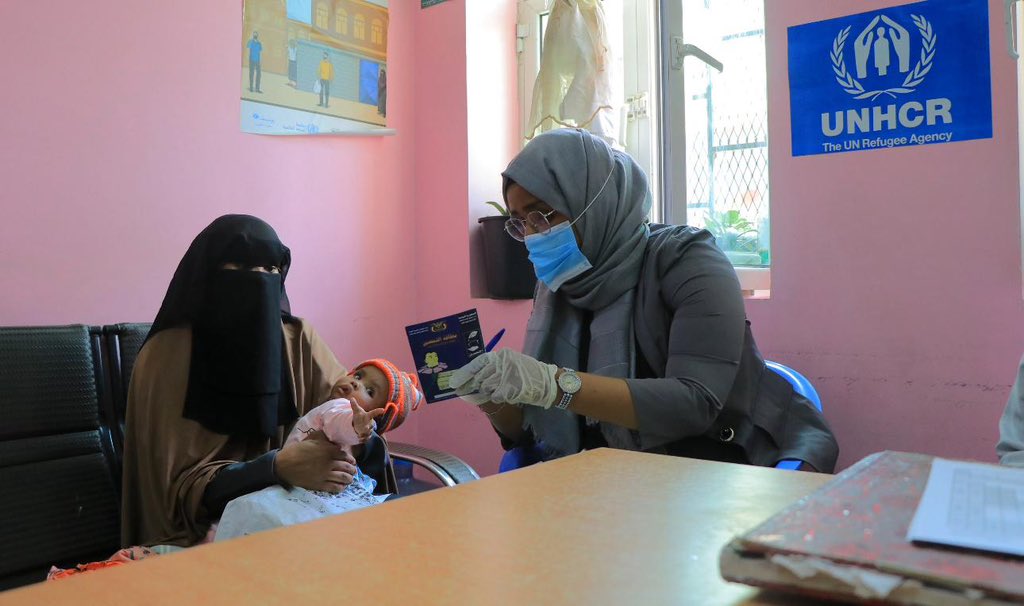The Qatar Red Crescent Society and UNHCR collaborate to offer healthcare to Yemeni refugees for the fifth year, focusing on enhancing medical services in Sanaa.
The Qatar Red Crescent Society (QRCS) in Yemen and the United Nations refugee agency (UNHCR) have joined efforts on Tuesday to provide Yemen’s refugees with healthcare for the fifth consecutive year.
The collaboration between QRCS and UNHCR comes under a 5 million QAR (around $1.37mn) project aimed at providing 50,630 refugees in Yemen with vital medical services while developing the infrastructure of two health facilities in Sanaa.
The targeted health facilities are the Al-Rahbi and Al-Hafi medical complexes, QRCS said.
“Continuous availability of medical needs allows refugees and Yemeni citizens to receive appropriate health services and saves them the burden of treatment and medication costs. The project substantially maximized the quality of our services,” Dr. Ahmed Issa, Director of Al-Rahbi Medical Complex, said in a QRCS press release.
The Qatari and UN entities first announced the project in 2019, providing Yemen’s refugees with free medications, medical examinations, maternal and child health services, vaccination, mental health, and health education.
Since October, both health centres in Sana’a have received 61,8011 refugees and 125,714 locals.
Yemen hosts around 99,877 refugees and asylum seekers, of which 70% are Somali and 20% are Ethiopian, making it the world’s fourth-largest host of Somali refugees.
The QRCS initiative additionally supported three hospitals—Al-Thawra, Al-Jumhuri, and Al-Sabeen.
QRCS said it managed to refer 17,024 patients to the facilities and perform “3,010 minor and major life-saving surgeries.” The patients included those with heart disease, kidney failure, and cancer.
Such humanitarian initiatives come as Yemen continues to battle the world’s worst humanitarian crisis following a nine-year brutal war. Only 50% of Yemen’s health facilities are currently functioning, according to the UNHCR.
Since 2015, Yemen has seen fighting between a Saudi-led military coalition and Iran-backed Houthi rebels. The war has killed an estimated 233,000 people, according to UN figures, though the death toll remains disputed.
Yemen witnessed its first period of peace in April 2022 following a UN-brokered ceasefire that expired in October of the same year when all sides failed to agree on an extension.
The truce was the first since 2016 and led to a 60% decrease in civilian casualties, as well as an almost 50% drop in displacements.
Yemen has since experienced a period of relative calm despite the expiration of the ceasefire, especially amid talks between Saudi and Omani delegations with Houthi rebel officials.
The race for peace in Yemen appeared to gain momentum earlier this year after a China-brokered deal between Saudi Arabia and Iran, which led to the resumption of relations between the former regional rivals.
The talks materialised into a proposed roadmap for peace, announced by the UN Office of the Special Envoy of the Secretary-General for Yemen (OSESGY) on Saturday.
The proposed roadmap entails measures for a nationwide ceasefire and “preparations for the resumption of an inclusive political process under UN auspices”.
Yemen still faces a dire humanitarian situation with more than 4.5 million people displaced by war, making it “among the top six largest internal displacements in the world”, according to the UNHCR.







